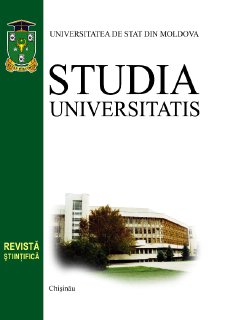THE BIOLOGICAL SELF-PURIFICATION CAPACITY OF NATURAL AND WASTE WATERS BY ASSESSING THE RATIO BETWEEN BIODEGRADABLE AND TOXIC POLLUTANTS
Gheorghe DUCA, Maria SANDU, Viorica GLADCHI, Angela LIS, Vladislav BLONSCHI, Universitatea de Stat din Moldova
Abstract
The study emphasizes the significant impact of chemical pollution in the aquatic environment, originating from
various sources - continuous, intermittent, and accidenta - with particular focus on small rivers in the Republic of
Moldova.
The article applies the methodology for evaluating the self-purification capacity of natural and waste waters using
parameters as biochemical oxygen demand (BOD5) and chemical oxygen demand (CODCr). These parameters are essential
for assessing the contribution of pollutant biodegradation processes in natural and waste waters. The classification of
waters into five levels of self-purification, from efficient to impossible, is based on the ratio BOD5/CODCr.
This paper emphasizes the need to comply with the normative requirements for the treatment of wastewater from
different economic sectors. Monitoring compliance with these requirements can be achieved by calculating the selfpurification capacity using the BOD5/CODCr ratio.
Keywords: self-purification, biochemical oxygen demand (BOD5), chemical oxygen demand (CODCr), water selfpurification capacity, aquatic systems, monitoring, hydrographic basin.


